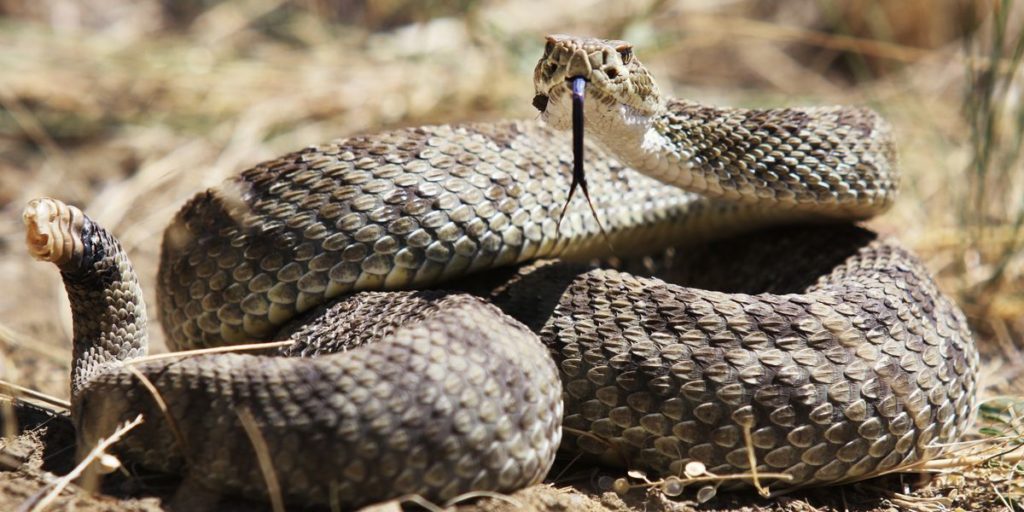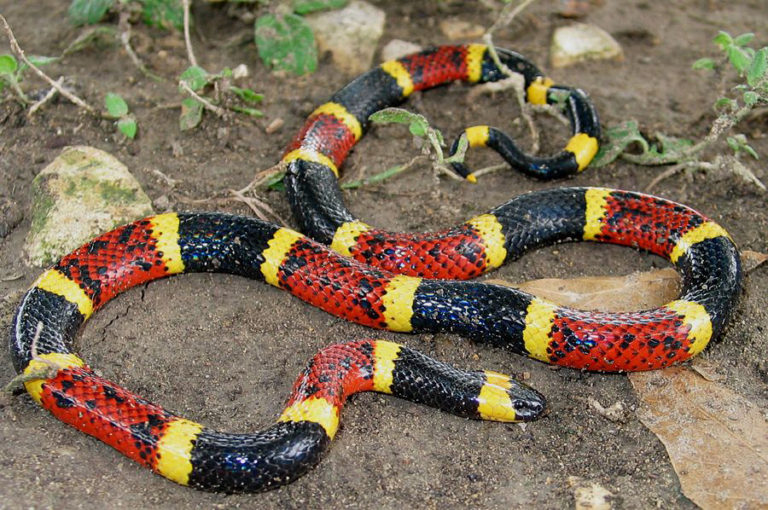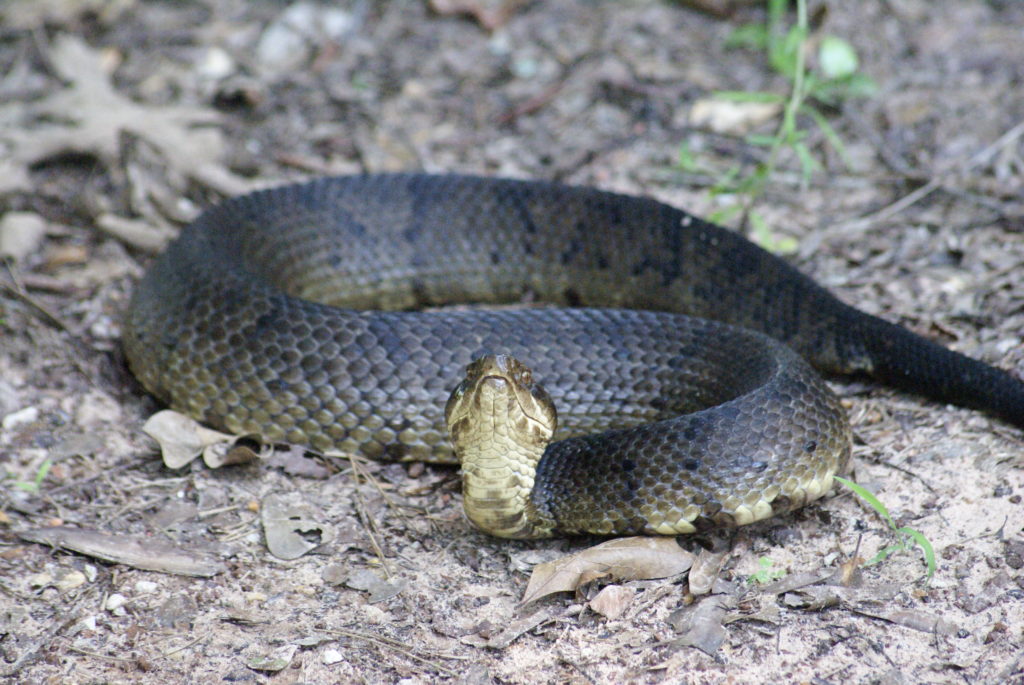
I don’t know how many times I’ve come upon snakes on the ranch whether it’s a non-venomous coachwhip or a deadly diamondback rattlesnake. Regardless, it can give quite a scare when you walk up on one.
I remember being out in the house pasture with my dad to check on the deer feeder when out of nowhere I heard the dreaded sound of a rattler. Immediately we both froze spotting the diamondback only two feet in front of us. Luckily, we weren’t too far away from the truck and were able to get away and kill it before anyone was bitten. Though he did get a few strikes in at us.
Even though I’m in my 30s, every time I come to the ranch in the summer my parents always seem to warn me to “watch for snakes” and every year we encounter at least one. So it made me think, what do you do if you are out walking around alone in the pasture and you get bitten by a snake?

Tips on what to do if bitten by a snake
- Do not wait for symptoms to appear if bitten. It’s important to get in touch with emergency personnel as soon as possible to get you to a hospital. If you have a cell phone and service, great, call 911. If there is no service, think about the last time you had phone service and go back to that area.
- Make contact via cell phone. If this is not possible, walk slowly to get help. Drink some water and take some calories if you have any. Some snake bite victims walk several miles after serious snake bites to their legs. They make it out fine because they made it out to medical care. This is much better than waiting for help if you can’t reach anyone. Don’t let the fear of “raising your heart rate and increasing the speed of venom circulation” prevent you from moving to get to care. Be very cautious about driving yourself to a hospital, since some bites have serious side effects that could suddenly limit your ability to drive.
- No first aid is much better than performing bad first aid. Don’t cut at or around the site of the bite, don’t compress the bitten limb with a cord or tight bandage, don’t attempt to extract or neutralize venom using electricity, fire, permanganate, salt, black stones, mouths, mud, leaves, etc.
- All Snake Bite Kits are dangerous and should not be used (confirmed by the Snake Bite Poison Hotline).
- A lot of snake bite patients injure themselves by panicking directly after a snake bite, by tripping over a rock or tree trunk, or by falling off the side of the trail. Staying calm is important! After a snake bite, walk about 20-30 feet away from the snake.
- Find a safe place to sit down asap. The venom can rapidly diffuse into your system, this can drop your blood pressure too low to pump all the way to your head while standing. Sitting down reduces your chance of fainting within the first few minutes. If you faint, it shouldn’t be more than a few minutes.
- Remove any rings, watches, tight clothing and anything else from the bitten limb, because the swelling will make it a lot bigger soon.
- Take a minute to calm down and plan your evacuation. The only effective treatment for a snake envenomation is the right anti-venom to neutralize it.
- A sharpie can be a great help for emergency personnel to assess the severity of your snakebite. Circle the location of your snake bite and write down the time next to it. Draw a circle around the border of the swelling and write down the time. Write down all the things you’re experiencing that are not normal, with the time next to it. Examples are: metallic taste in your mouth, changes to sense of smell, sudden loss of vision, double vision, visual disturbances, ringing in the ears, headache, nausea and vomiting, bleeding from anywhere, dizziness, shortness of breath, etc. The most common signs and symptoms are pain and swelling. Update this info every 15 or 30 minutes as the swelling moves up the limb and your symptoms develop.

PREVENTING A SNAKE BITE ON A TRAIL
Preventing a snake bite is obviously better than dealing with a snake bite. Here are a few ways to reduce the risks of snake bites.
- Be aware that there could be snakes out on a ranch, even if it is just outside of town.
- Watch where you’re placing your feet, be extra aware on rocky, sunny areas, pockets of leaves and logs. If you’re off a trail or road, the odds go up because there are more rocks and cracks and less consistent disturbance to scare the snakes away. Watch out when going through tall grass and weeds.
- Step on a rock or log, not over it. This way you can spot a snake that may be sheltering under it and take action quickly.
- Watch out when sitting down on a rock or tree stump, you might be sitting on a snake.
- Don’t try to chase the snake off, this is why most people get bit by snakes.
- Don’t walk, etc. with headphones on or have at least 1 earbud out so you can hear their movement or rattle.
- Snakes tend to be near water, especially if it’s in a dry environment. If you’re near a spring or river, keep an extra eye out.
- Since snakes are cold-blooded, they’d like to come out when it’s warm and sun themselves on rocky areas or trails. They like to be on the edge of a sunny patch. If you come across a sunny patch, your encounter chances increase.
- Most venomous snakes in the US rest during the day. The chances of running into one are higher in the mornings and early evenings, when their activity might be a bit higher.
- In the spring, after snakes have hibernated together, the frequency of sightings goes up. In the fall, when they retreat to a hiding place to spend the cold winter months, they are on the go, so higher chances to encounter a snake. Most snake bites occur between April and October.
- Buy a 2‑Way Satellite Communicator, for example the Garmin inReach. This allows you to stay in touch anywhere around the globe, including on remote locations without cell phone reception, and connect 24/7 to a Search and Rescue Monitoring Center, to communicate your emergency.

Things to bring with you that help with a snake bite
- Phone
- Sharpie
Getting bitten by a snake can be deadly, especially if you’re on your own in a remote area. The following story is a good explanation of how a snake bite would feel: I Should Be Dead. Each year, about 8,000 venomous snake bites occur in the US and about 5 of those people die. You’ve got a good chance of survival if you seek medical attention immediately.
Learn more about venomous snakes in your area or state. Below are links for states that we do business in.
Texas | New Mexico | Oklahoma | Colorado | Kansas
To summarize
Try to stay calm, sit down, contact help, remove anything tight, document your situation.